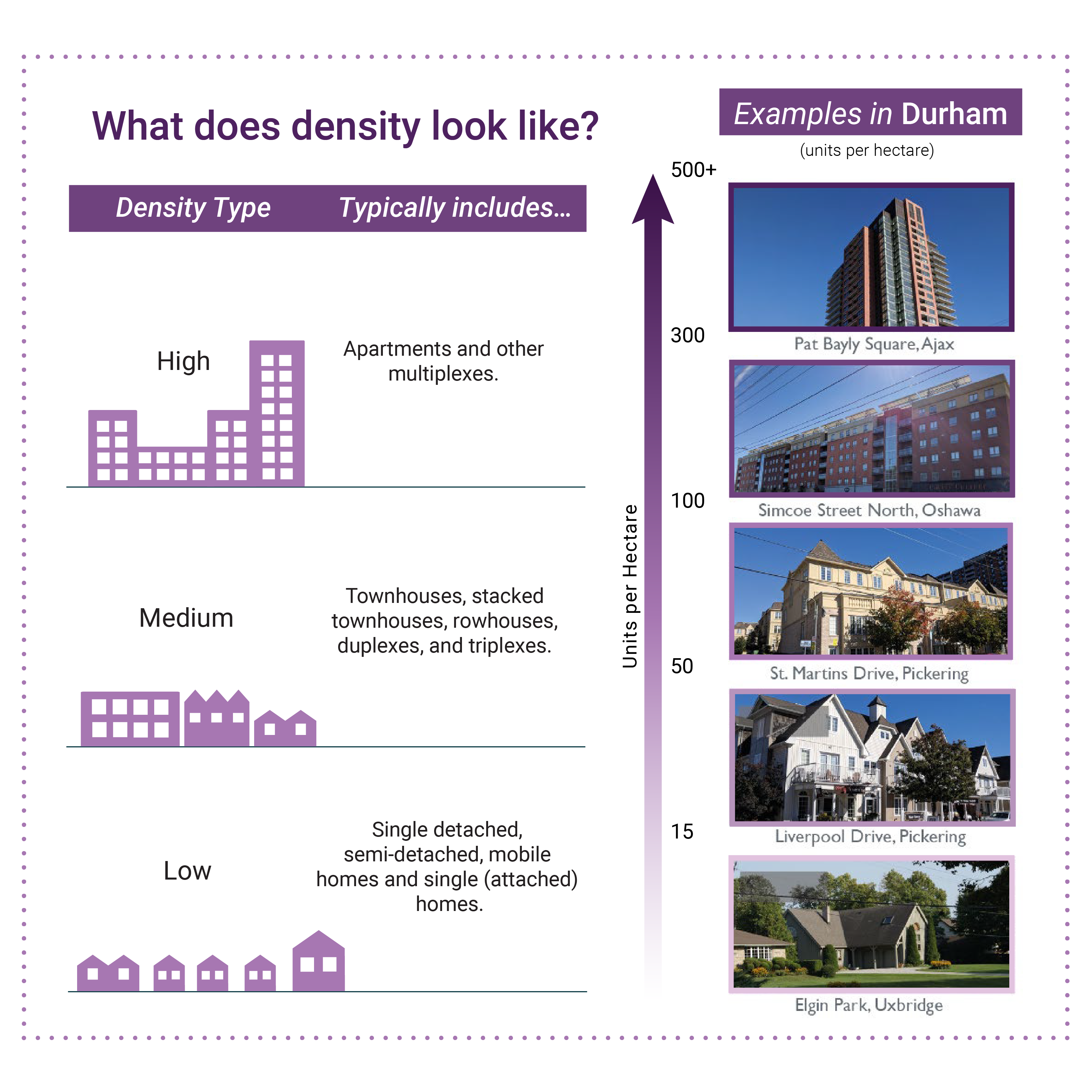Comparing Housing Form by Density Type
Given the Region’s historic pattern of development, low density housing (such as single detached homes) is currently the most common form of housing in Durham. In recent years, however, there has been greater diversity in the forms of housing being constructed, with more medium and high density, including townhouses and apartments. Over the past 20 years, the percentage of low density housing has been decreasing.
A healthy housing system offers a diverse mix of forms that can accommodate a variety of individual and family needs.

Note: Examples of low, medium and high-density homes, based on classifications contained in the Durham Regional Development Charge Background Study, 2023.
A healthy housing system offers a diverse mix of forms that can accommodate a variety of individual and family needs.
Low Density:
- Can include: single-detached, semi-detached and linked houses.
- Lower density housing is typically ground-oriented, meaning that a person has direct access to a front or rear yard from their unit.
Medium Density:
- Can include: townhouses, stacked townhouses, row houses, duplexes and triplexes.
- Medium density housing has the potential to strike a balance between space efficiency and personal room, allowing for more efficient land usage and the promotion of active transportation.
High Density:
- Can include: apartments, multiplexes (other than duplex or triplex) and other mixed-use developments where residential and commercial uses (e.g. retail and/or office) are found in the same building.
- Higher density housing results in more compact neighborhoods, which is more likely to promote walking, cycling, transit use and easy access to amenities from mixed-use housing, reducing the need for cars and decreasing pollution.

Note: Examples of low, medium and high-density homes, based on classifications contained in the Durham Regional Development Charge Background Study, 2023.
Contact Us





